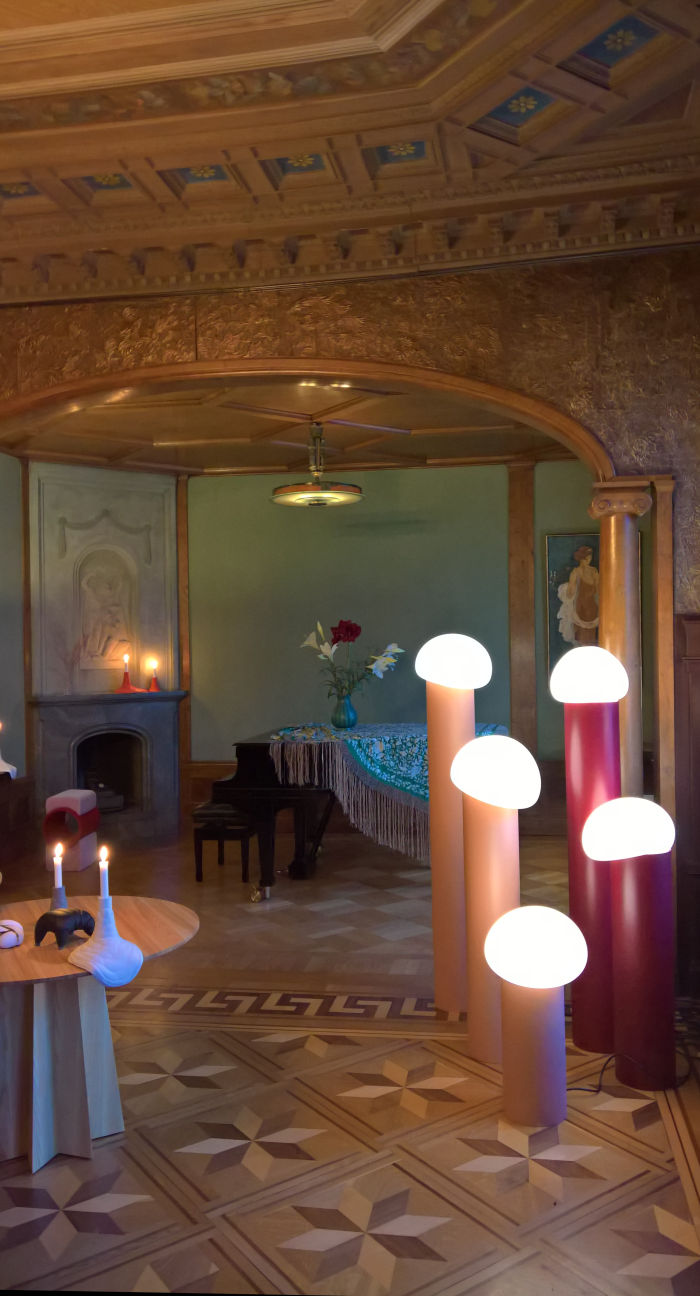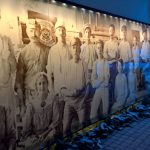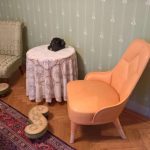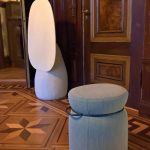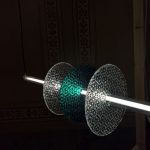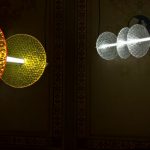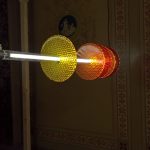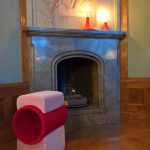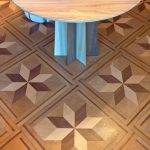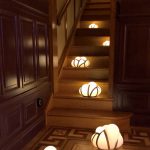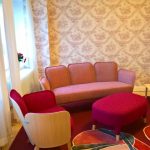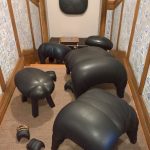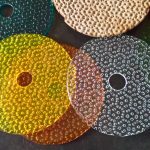Stockholm Design Week 2019: The Baker’s House by Färg & Blanche
It’s been 8 years since we last visited an exhibition by Stockholm based studio Färg & Blanche.
Then 2011, back in the days when we still had our own teeth, our own hair, dreams and aspirations which were in our control, it was the exhibition 20 designers at BIOLOGISKA, one of the most memorable locations we’ve ever viewed an exhibition in. And despite having been in many an impressive venues since, a multi-storey 360 degree diorama populated by stuffed animals in a range of habitats, remains a firm favourite.
Now 2019, the venue equally as memorable, Emma Marga Blanche’s paternal great-grandparents late-19th century flat on the site of, and next, to their former Knäckebröd factory. A space seemingly caught in time while all around Södermalm has evolved from a largely working class district into one of Stockholm’s hipper.
The principle difference between 2011 and 2019 is that then Färg & Blanche presented works by themselves and selected chums, now it is all their own work.
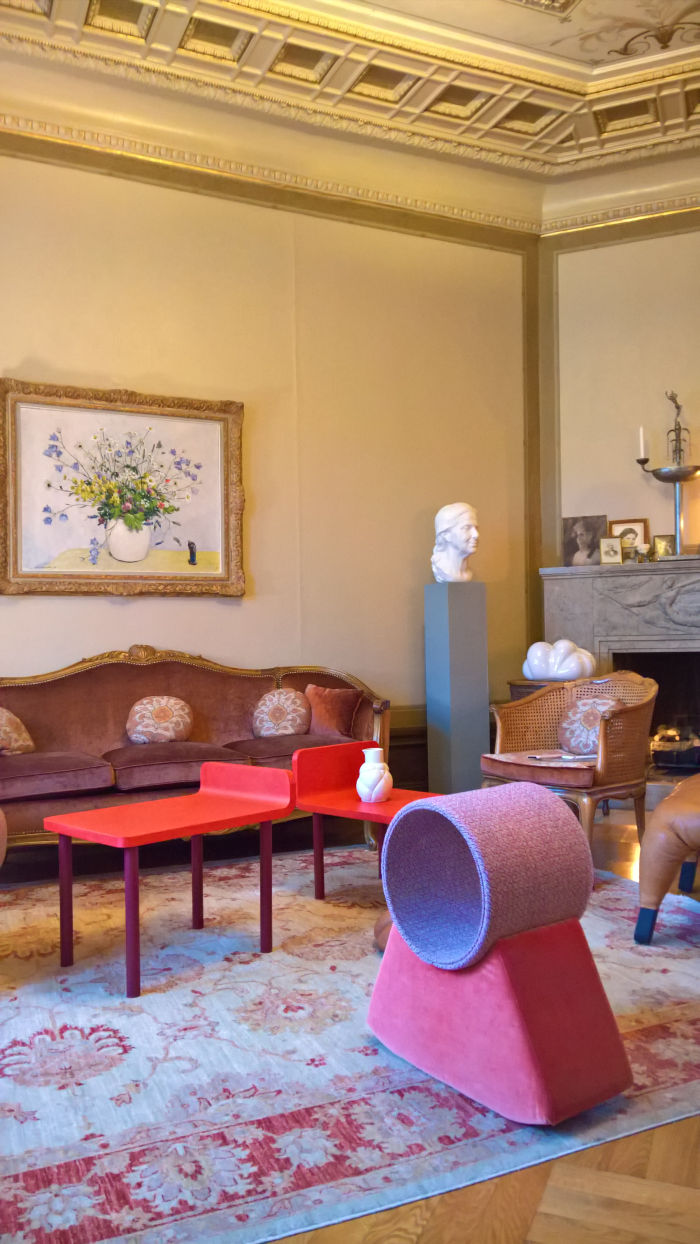
The wedge shaped component of Keyhole collection by Färg & Blanche, as seen at The Baker’s House, Stockholm Design Week 2019
Born and raised in France as the daughter of a Swedish father, Emma Marga Blanche remembers all too well the annual trips to Stockholm and the paternal family home. And in many regards it is memories of those days, those abiding childhood images of a world that was yours, but also wasn’t, familiar yet foreign and fascinating, enriched with the (hi)story of the family’s Knäckebröd factory, which are/were the inspiration for The Baker’s House; an exhibition which in addition to presenting a number of existing Färg & Blanche products, including new objects for both Gärsnäs and Johanson, is essentially about a range of new works based on and growing from reflections and considerations concerning the house, the Knäckebröd and a childhood wonder that refuses to dissipate.
As with any such projects where designers are given/take a theme and develop projects based on that, The Baker’s House is/was for us a lot of works in progress, object which show varying degrees of promise, and thereby something of which we approve; for seeing projects in such a state allows for much purer insight into not only Färg & Blanche’s design processes, but their understandings of subjects such as materials, ornamentation or construction. In addition, what particularly caught our attention at The Baker’s House was something we’ve never really considered before, but which when viewing Färg & Blanch works next to period pieces from the flat suddenly dawned on us; namely an understanding of the pair’s work very much as Edward J Wormley’s re-imaging of period pieces for Dunbar. In many regards works such as the Emma chair or Julius collection, both for Gärsnäs, present that same visual and formal reduction, while leaving the flow of the line or dominance of the silhouette as in the historical pieces from which they arise. World’s apart in terms of objects from Wormley’s work, but very much in the same spirit of gradual renewal and reworking.
The vagaries of the furniture industry being as they are, the majority of the works will, we suspect, remain eternally in progress, which, as ever needn’t be considered negatively, assuming the pair have learned something from the process and can take that into developing new projects; we hope however a couple of objects will make it further including a pair of objects we’re referring to as the….. no, no, first the story.
Two objects particularly stood out for us in the presentation, one slightly quadratic with an open tube running through the middle, the other an open ring atop a more rounded wedge shaped base. That they were both upholstered we understood them both as stools, particularly when we saw the quadratic one set next to a fireplace; could however with a bit material tinkering understand them just as happily as occasional tables. But regardless of what they are, we were very taken with them formally, both presented themselves as abstract though easily accessible objects, and functionally, for all the tube as storage space, even if the wedge based one does have to have a rocking function. It’s currently got a little movement, but it needs to rock, needs to get a belly fully of beer, no…… hang on…… that’s Elton John, but it does need to rock. Talking to Emma about them we learned they were inspired by the keyholes in the flat, and through which she used to peer, wide-eyed we assume, into the mysterious, fantasy space. And of course they are. And that’s why we considered them abstract but accessible, because they are, and this also why they so attracted us. And which is why we’re calling them the Keyhole Collection
A work which confused us, in the positive sense, was what we’re calling the Knäckebröd lamp. And which probably also is thus named. Inspired by the long pole on which round Knäckebröd are traditionally dried and stored, the lamp sees coloured glass Knäckebröd hung along a tube light; however while really liking the direction it was going, we didn’t quite feel it was where it should be, for us it was all a little unsettled, didn’t have the visual calm, the quite self confidence that such an object really needs to truly hang in a space with any conviction. But that might jut be us; we’re not Swedish, Swedish sensibilities may be more use to hanging Knäckebröd and thus have a much freer and ready association with such a piece. Whereby one must always be careful when attempting to place the understandings of contemporary Swedes in an historic context. But we’re certainly looking forward to how and where it develops, because we’re certain it will.
For all in or near Stockholm The Baker’s House can be viewed at Bondegatan 21, 116 33 Stockholm until Saturday February 9th. Entry is free but only as part of a guided tour, and booking is essential. Full details can be found at partprojects.se/bakershouse
As we were leaving Fredrik Färg imparted another piece of family history to us, one which sounded like the start of the next Färg & Blanche exhibition we’ll visit…. we trust they’ve got a good location in mind. And that it will be before 2027.
Further details on Färg & Blanche can be found at www.fargblanche.com
- Ex-employees greet one at the entrance to their ex-bakey…..
- Emma chair by Färg & Blanche for Gärsnäs, and Slipper chair, as seen at The Baker’s House, Stockholm Design Week 2019
- The new Johanson stool by Färg & Blanche, and flip-table, as seen at The Baker’s House, Stockholm Design Week 2019
- Knäckebröd lamp by Färg & Blanche, as seen at The Baker’s House, Stockholm Design Week 2019
- Knäckebröd lamp by Färg & Blanche, as seen at The Baker’s House, Stockholm Design Week 2019
- Knäckebröd lamp by Färg & Blanche, as seen at The Baker’s House, Stockholm Design Week 2019
- The quardatic component of Keyhole collection by Färg & Blanche, as seen at The Baker’s House, Stockholm Design Week 2019
- Parkett Table by Färg & Blanche, as seen at The Baker’s House, Stockholm Design Week 2019
- The Baker’s House by Färg & Blanche, Stockholm Design Week 2019
- Julius collection by Färg & Blanche for Gärsnäs, as seen at The Baker’s House, Stockholm Design Week 2019
- Not quite sure what the collective noun is for Succession by Färg & Blanche, as seen at The Baker’s House, Stockholm Design Week 2019
- Only one colour is edible…..
Tagged with: Färg & Blanche, Knäckebröd, Stockholm, Stockholm Design Week, The Baker's House
